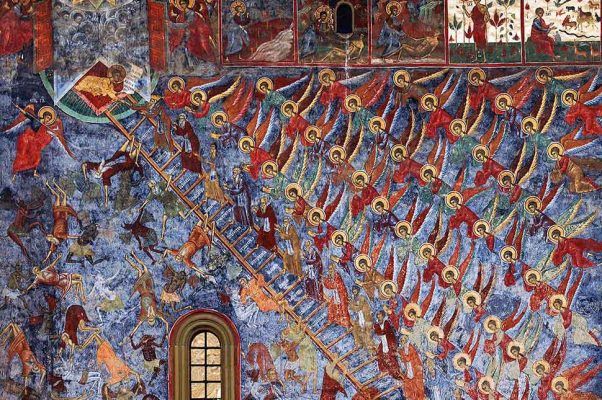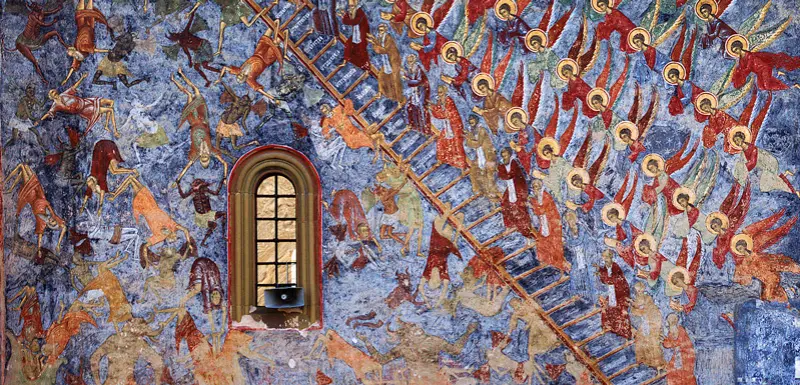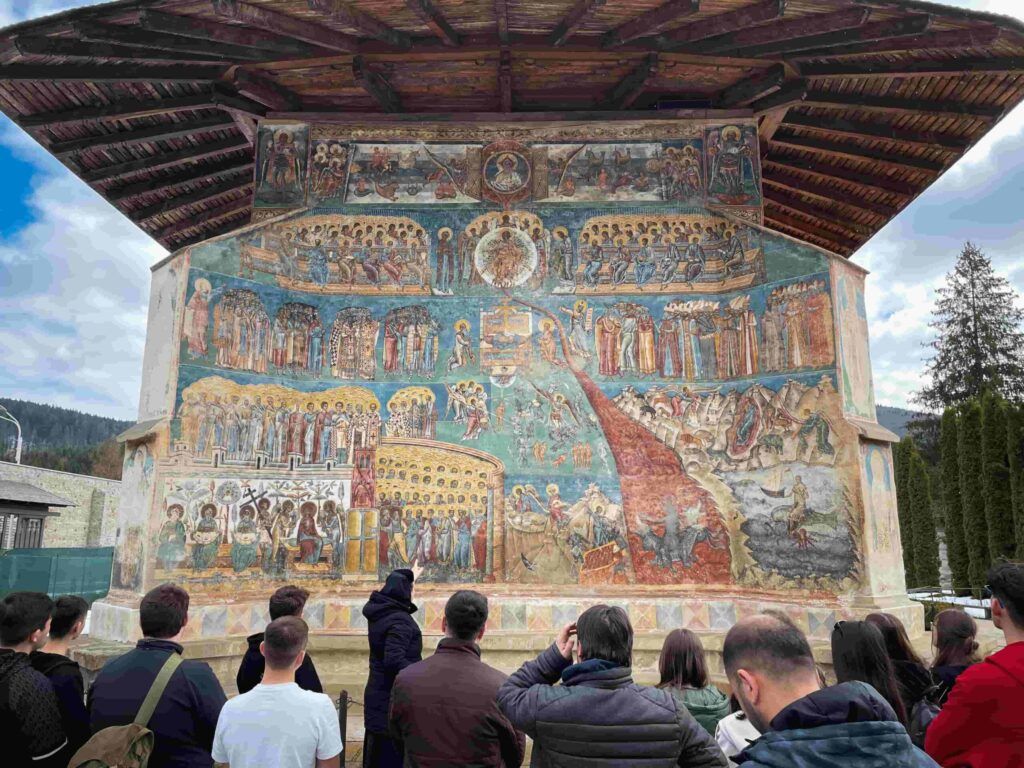Chapters
During the 16th century, Moldavia was shaken by the power struggle between the Ottomans, the Poles, and the Austrians. These three powerful empires constantly fought to gain control over the region. The fortified monasteries played a huge role in Moldavia’s history, serving as lines of defence, places of worship, and sources of knowledge for those who wanted to learn more about religion and the world.
The Movila brothers, the Moldavian ruler’s most trusted advisors at the time, decided to build a fortified monastery near Moldavia’s former capital city, Suceava. Construction started in 1583 and was finished in 3 years “with God’s will,” as it is written at the entrance. Ioan Movila, one of the three brothers, decided to improve the construction in 1595 by adding two more porches and painting the interior and the exterior.
Even though Moldovita was built after the reign of Stephen the Great ended, it preserves the Moldavian Architectural Style that combines elements from the Byzantine and Gothic art with various motifs of the old wooden churches. Sucevita is, chronologically, one of the last monasteries to be decorated in the famous Moldavian style. It has the appearance of a real fortress, with towers, buttresses, and watch roads – a true masterpiece of Romania’s patrimony.
The dominant colours of the frescoes are purple, red and blue. They appear against an emerald green background, defining as an amazing chromatic effect.
An important painting depicts the Siege of Constantinople on the south façade, reminding of the Romanians’ fights against foreign invasions, especially Turks. The painting mixes scenes of the siege of Constantinople from 1453 with others referring to a previous such attempt made by the Persians in 626. Against an intense blue background, you can also see the Hymn to the Virgin composed by Metropolitan Sergius in thanksgiving for her intervention. The Last Judgement is also present and displays apocalyptic images of dignitaries being taken along by Satan to Hell.
The monastery’s church is distinguished from the rest of the exterior-painted churches in Bukovina by the north wall’s scene called The Ladder of Virtues. The ladder has 30 steps, each symbolizing a virtue for Christians. The ladder is also a symbol of the endless battle between the good and the evil in everyone’s heart.

Sucevita mural
The Sucevita Monastery is part of the UNESCO World Heritage since 1993 as one of the Painted Churches of Moldavia, together with another 7 painted monasteries from this region. Today, Sucevita Monastery is one of the most visited monasteries in Bukovina. In its workshops, the nuns work on restoring old wooden icons, religious books, and embroideries, using the same methods Mediaeval craftsmen have used when they were originally made.
Visiting hours:
From dawn till dusk.
Ticket Prices:
Adults: 10 lei.



